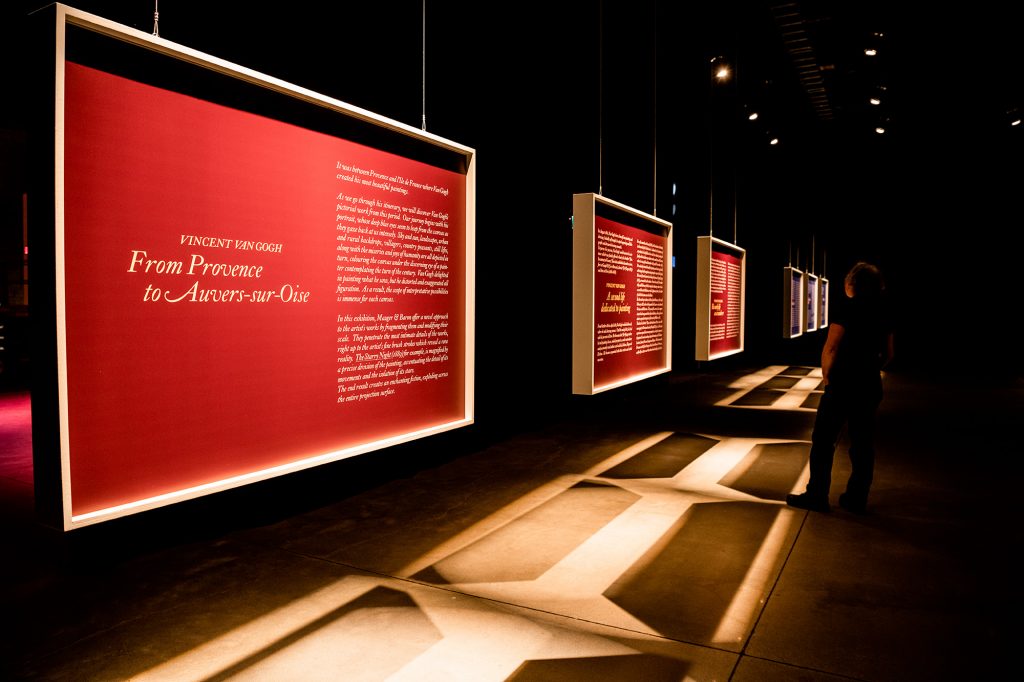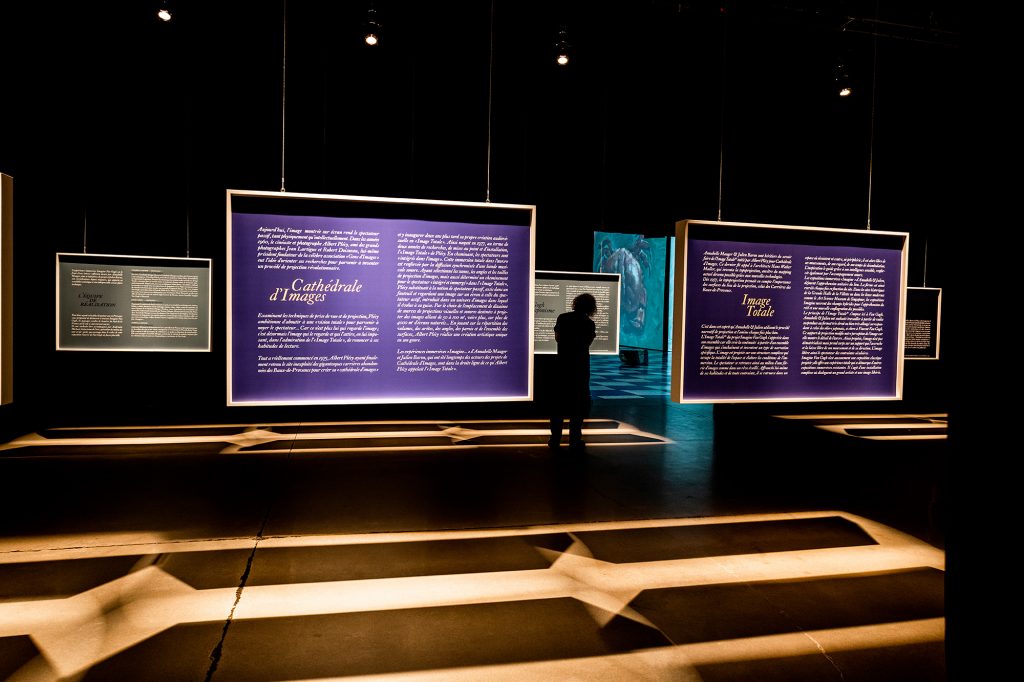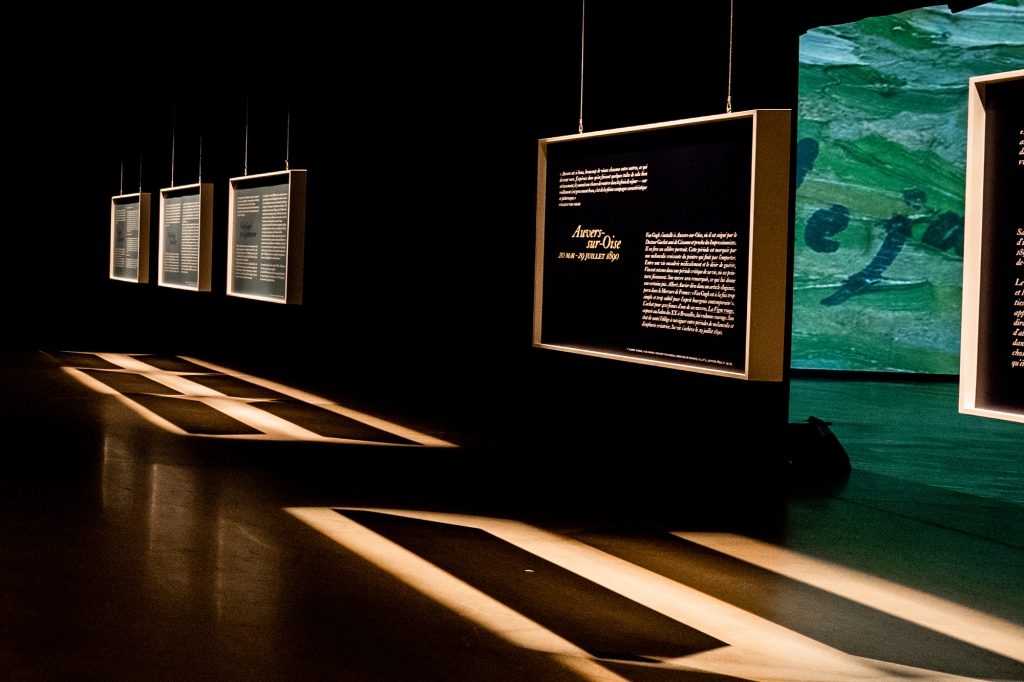From Provence to Auvers-sur-Oise
Annabelle Mauger forged Imagine Van Gogh by putting in perspective important themes from Van Gogh’s work. She selected artworks and archives exclusively from the last two years of the artist’s life: 1888-1890.
In 1888, Van Gogh decided to relocate to Arles, an idyllic city in the South of France where his paintings became even more colorful and expressive. Annabelle Mauger shows how Arles seemed like an artist’s paradise to Van Gogh. Surrounded by breathtaking, sun-drenched sceneries, the artist completed many of his most celebrated paintings in 1888 and 1889.
Indeed, he painted Bedroom in Arles in 1888, and produced his most well-known floral painting, Irises, in 1889. He subsequently admitted himself into a mental health facility in the nearby town of Saint-Rémy-de-Provence. While committed, he resumed his artistic practice and produced more than 150 paintings, including the famed Starry Night showcased in our exhibition. Shortly afterwards, Van Gogh left the hospital and moved to what would be his last abode in Auvers-sur- Oise, in suburban Paris.






